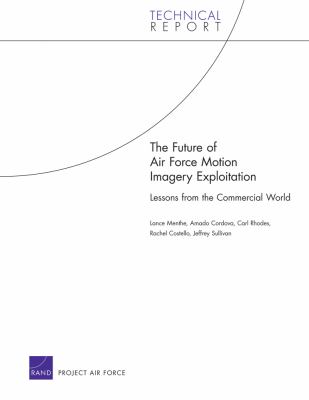
e-Book
|
The future of Air Force motion imagery exploitation : lessons from the commercial world
Copies
0 Total copies, 0 Copies are in,
0 Copies are out.
Title
The future of Air Force motion imagery exploitation : lessons from the commercial world
Digital Link
Authors
Subjects
Language
English
Published
Santa Monica, CA : RAND, 2012.
Publication Desc
1 online resource (xvi, 51 p.) : ill. (some col.).
ISBN
9780833059642
(Online)









